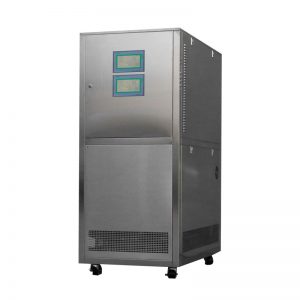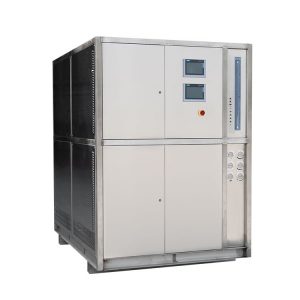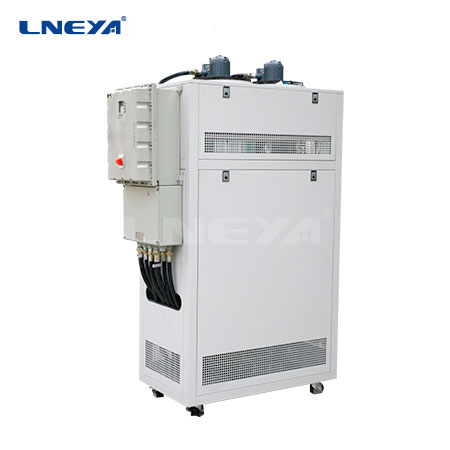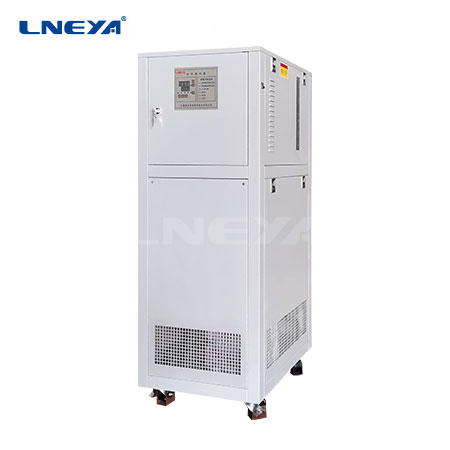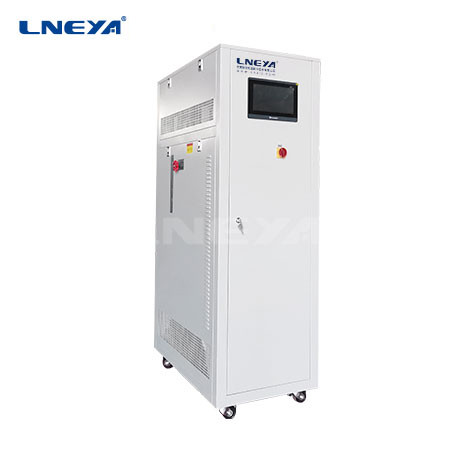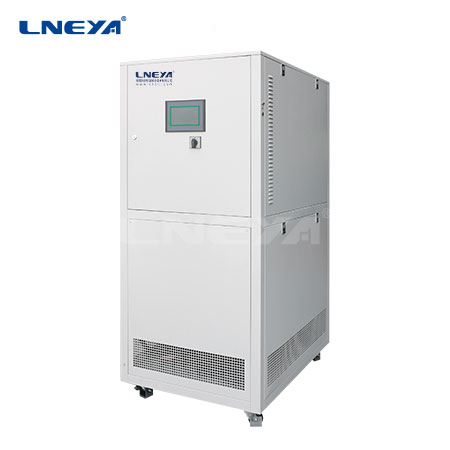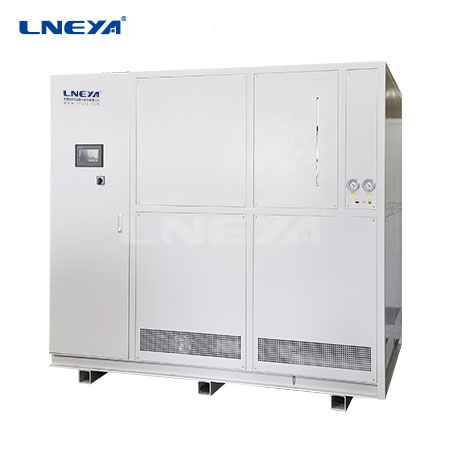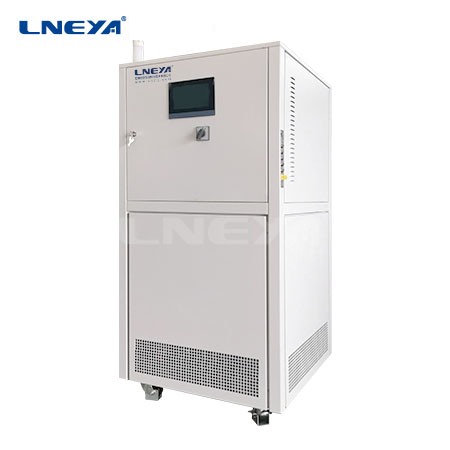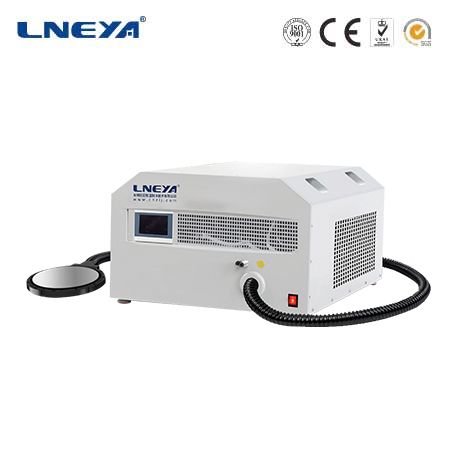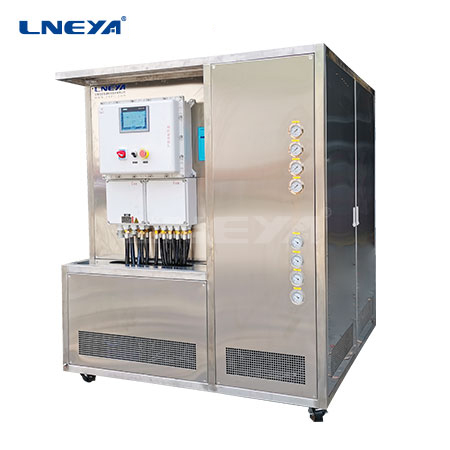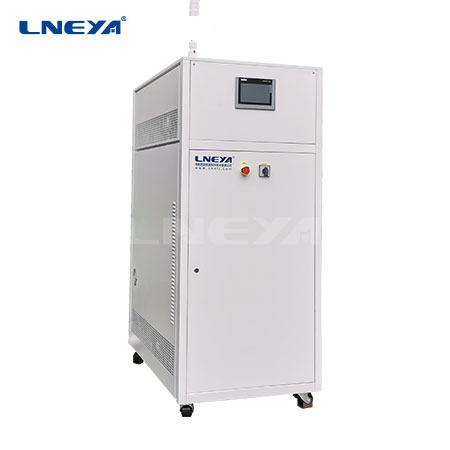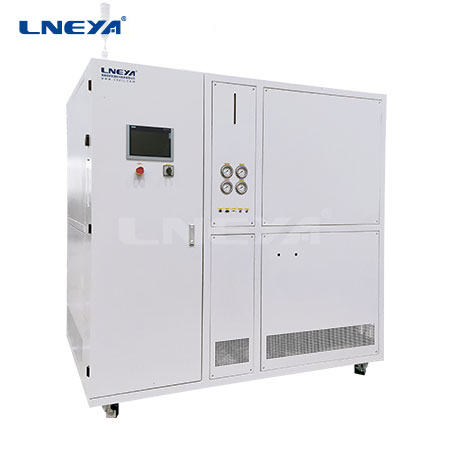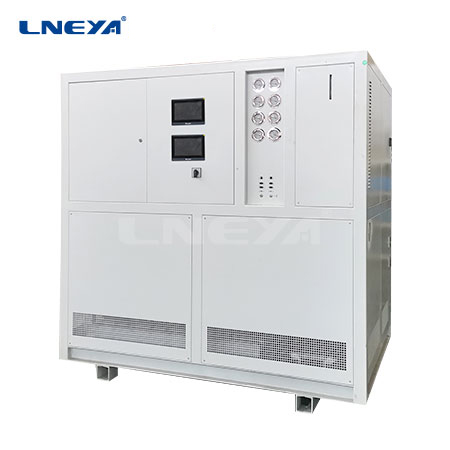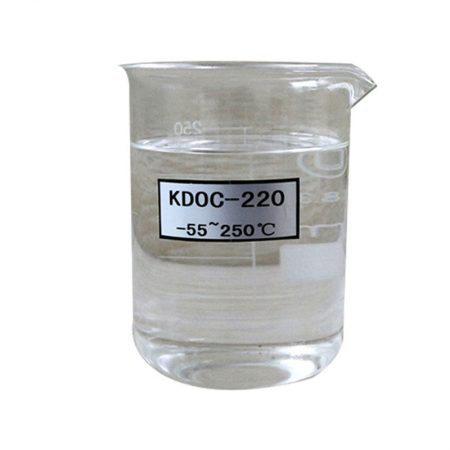Introduction of Chiller Antifreeze
Why should the chiller do antifreeze work?
The severe cold weather in winter will cause the inside of the circulating cooling water pipe of the chiller to freeze, causing the internal volume to increase, causing the pipe to rupture and deform, resulting in water leakage and refrigerant leakage. Therefore, it is necessary to carry out antifreeze work for the chiller.
Adding antifreeze is a key measure to prevent freezing of chillers.
As for the choice of antifreeze for chillers, many industry customers are unclear. Let me give you a basic introduction. Due to the selection of inappropriate antifreeze, it will also cause corrosion and damage to the internal pipes of the equipment.
The requirements of the chiller for the performance of antifreeze are as follows:
1. Stable chemical properties
2. Good antifreeze performance
3. Low temperature viscosity is not too big
4. Corrosion and rust resistance
5. No swelling and erosion properties for rubber sealing conduits
The following 3 points should be paid attention to when using antifreeze in the chiller:
1. Low-concentration deployment of antifreeze
The components of antifreeze are ethylene glycol and propylene glycol. If the concentration exceeds 30%, the performance of the chiller may be degraded, and there is a potential risk of failure of the stainless steel type of water pump motor. Therefore, when the antifreeze requirements are met, the lower the concentration of antifreeze, the better.
2. Not easy to use for a long time
Antifreeze also has a service life, it will deteriorate over time, and its corrosiveness and viscosity will change, which will affect the performance of the chiller. Use tap water or purified water for cooling in summer and add antifreeze in winter.
3. Different brands of antifreeze cannot be mixed
Do not mix antifreeze of different brands, because it is easy to cause chemical changes after mixing different antifreezes, and precipitation or bubbles will appear, which will affect the performance of antifreeze. The reason is that the main components and additive formulas of different antifreezes are different. So do not mix antifreeze.
Solved the problem of antifreeze, let me provide friends with the method of storing and operating the chiller in winter.
1. If the equipment is shut down for a short period of time, it is recommended to start the chiller alone to keep it running continuously to maintain a normal working water temperature. And always pay attention to the running status of the chiller to prevent power failure.
2. If the equipment does not work at night, and it is determined that there will be no power failure, please start the chiller separately, and set an appropriate temperature (considering energy saving) to ensure that the cooling water is in a circulating state and the water temperature is not lower than the freezing point.
3. If the machine is shut down for a long time, be sure to drain the coolant inside the chiller, and use nitrogen to drain the coolant inside the water tank, condenser pipes, water pumps, filters, and heat exchangers. (If the coolant cannot be discharged due to environmental limitations, please refer to step 2 to ensure that the coolant is in circulation and the water temperature is not lower than the freezing point)
Wir sind ein professioneller Hersteller von Temperaturkontrollgeräten und unterstützen kundenspezifische Dienstleistungen, bitte uns konsultieren für Details!
Temperaturregelbereich: -150°C bis +50°C

Dynamische Temperaturkontrollsysteme
Temperaturregelbereich: -120°C bis +350°C

Test-Kühlgeräte für Kraftfahrzeuge
Temperaturregelbereich: -40°C bis +100°C

Temperaturregelbereich: -85°C bis +250°C

Temperaturregelbereich: -150°C bis -10°C
 LNEYA
LNEYA
 简体中文
简体中文










